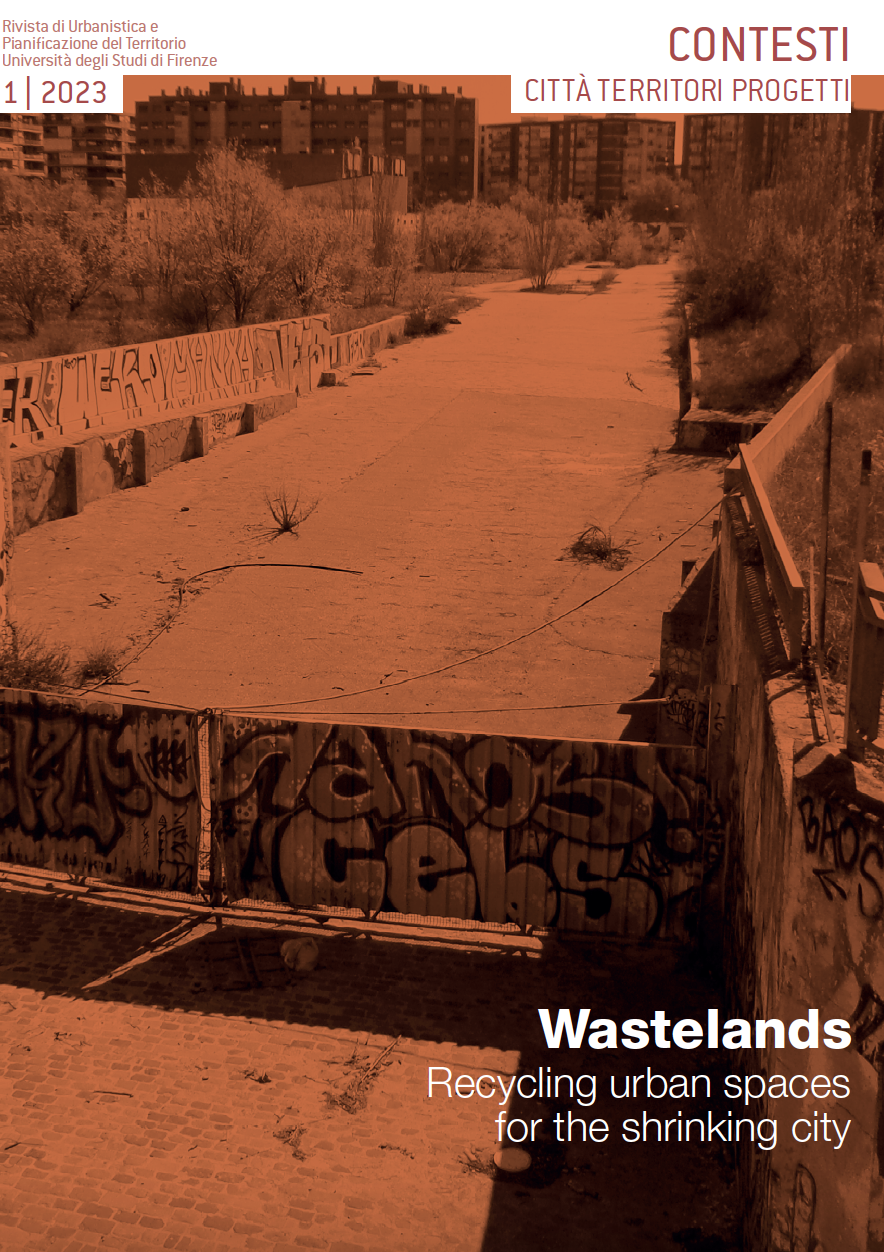Capitale geografico sfruttabile: Progetto di recupero delle aree alterate dalla presenza di rifiuti
Published 2023-09-12
Keywords
- Rifiuti; Città; Architettura; Recupero; Urbanistica.
How to Cite
Copyright (c) 2023 Silvia Dalzero

This work is licensed under a Creative Commons Attribution-NonCommercial 4.0 International License.
Abstract
The landscape is changing to accommodate the disposal and collection of waste. More than 30.000.000 tons of urban, and 1.000.000 of special are produced in Italy every year and their management is diversified and requires adequate systems such as incinerators which dispose of them through combustion and landfills which are definitive deposits among the most ancient techniques and among the most dangerous for the environment. Observing the rubbish magma as it is received by the landscape is today's challenge that the research cartographically documents by focusing on the one hand on simple cataloguing as numerically significant data in itself, and on the other on the analysis of the aspects linked to the phenomena of new urbanization or phenomena modification of the existing one that this proliferation of disposal plants determines. We can say a moving seismograph that documents a reality that invades the territory in surprisingly different ways in time and space and whose research reveals the unexplored architectural potential by taking an example from that process which sees places altered by the presence of waste, once perceived as inhospitable, to be transformed into real project opportunities as evidenced by the numerous parks or the ‘energy bases’ built in places previously abandoned and taken away from the city that welcomes them
Downloads
References
- Antonioni A. 1948, N.U. - Nettezza urbana -, IMDbPro.
- Bolognini M., Monicelli M, Pasolini P.P., Pino Zac, Steno, Rossi F. 1968, Capriccio all’italiana, episodio Pasolini P.P., Che cosa sono le nuvole?, Dino De Laurentiis Cinematografica S.p.A.
- Braungart M., McDonough W. 2003, Cradle to Cradle. Remaking the way, we make things, Water proof, North Point Pr.
- Calvino I. 1998, Le città invisibili, Mondadori, Milano.
- Calvino I. 2002, La poubelle agréée e gli omini arancio, Mondadori, Milano.
- Dalzero S. 2019, Paesaggi Alterati, LiberEdizioni, Brescia.
- Koolhaas R., Boeri S., Kwnter S., Tazi N., Ulrich Obrist H. 2000, Mutation, EDITORIAL ACTAR, Barcellona.
- Letife T., Saracgil A. (tr.it.) 1995, Fiabe dalle colline dei rifiuti, Giunti, Firenze.
- Lynch K. 1976, What time is this place? The MIT Press, Cambridge.
- Lynch K. 1990, Wasting Away. An exploration of waste: what it is, how it happens, why we fear it, how to do it well, Sierra Club; Southworth M. (tr. it.) 1994, Deperire. Rifiuti e spreco nella vita di uomini e città, ed. Legambiente e CUEN.
- Lynch K., Ceccarelli P. (a cura di), Guarda G.C. (tr.it.) 2006, L' immagine della città, Marsilio, Roma.
- Proietti T. 2010, Concinnitas. Principi di estetica nell'opera di Leon Battista Alberti, Lulu Press, Inc., Raleigh
- Secchi B. 2005, La città del ventesimo secolo, Laterza, Roma-Bari.

